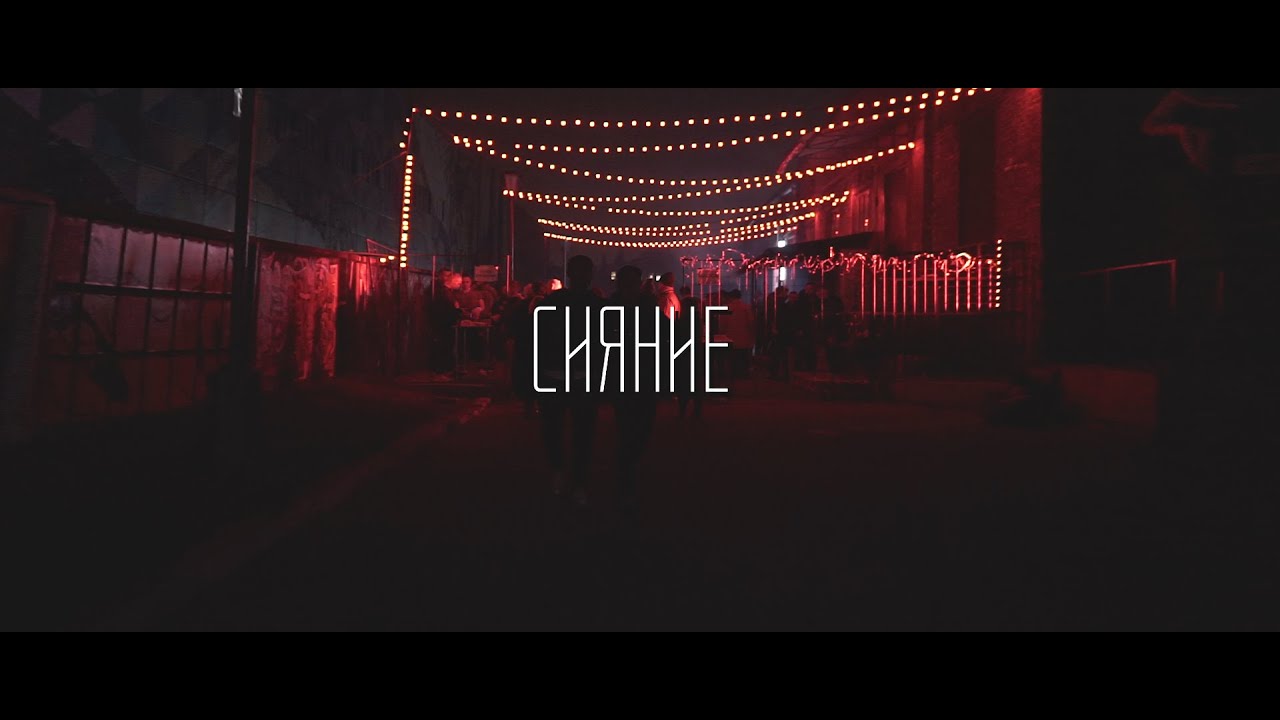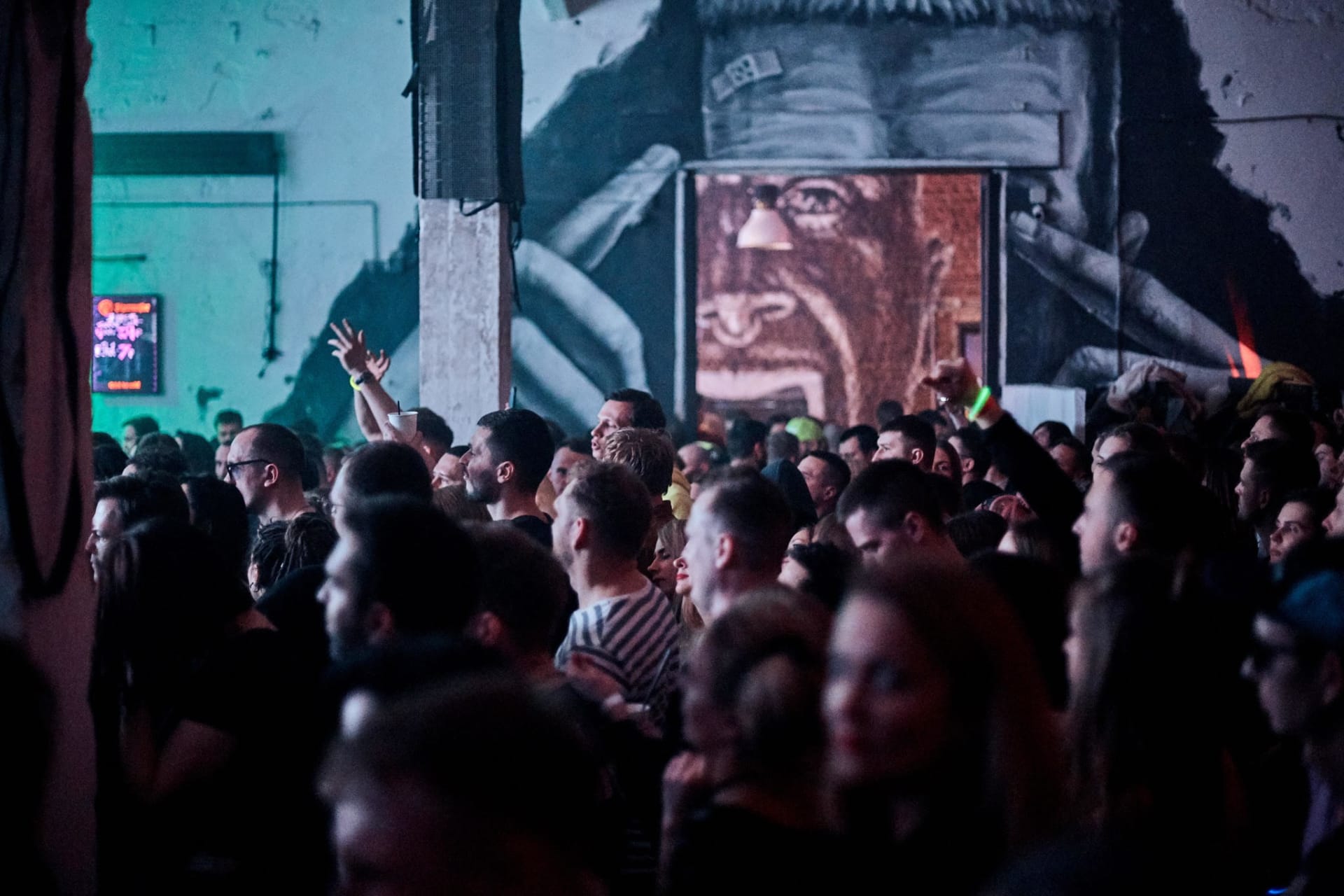
Minsk Nightlife Report: A Look At The Growing Techno Scene In “Europe’s Last Dictatorship”
Meet the people behind the rapidly expanding club scene in Belarus, a country ruled by autocratic president Alexander Lukashenko since the fall of the Soviet Union.
A new Belarusian underground is taking form. Despite limited resources and almost zero tourism, Minsk, Belarus has become a party haven, building an otherworldly and in-demand electronic music scene in the span of just a few years.
On weekends, clubs like OK16, Lo-Fi Social Club and HIDE draw seemingly endless crowds of dancers. Events bend genre, time and place, using Minsk’s wealth of abandoned buildings to host dynamic events that carry on deep into the morning. As Belarus liberalizes and opens its borders for visa-free entry, local music collectives like Mechta, Grave Board Clan and Bassota have their eyes on the world.
By loading the content from Soundcloud, you agree to Soundcloud’s privacy policy.
Learn more
Searching for Minsk’s famed Kastryčnickaja street, one would be forgiven for thinking they took a wrong turn somewhere down the line. The city center, which lies about 20 minutes away by walking, is famous for its immaculate streets and towering communist architecture, much of which still bearing the stars, hammers and sickles of the Soviet period.
As the lights of the city fade, however, a new Minsk emerges. Communist constructions are replaced with vacant, muraled warehouses. A teenager pours beer from a large plastic bottle into paper cups, tucking the arrangement into his jacket at the sight of a police car. Someone is playing a “Tokyo Drift” remix so loudly that windows down the block shake with every 808 kick. While much of Minsk is quiet by 10 p.m., here, the night has only just begun.
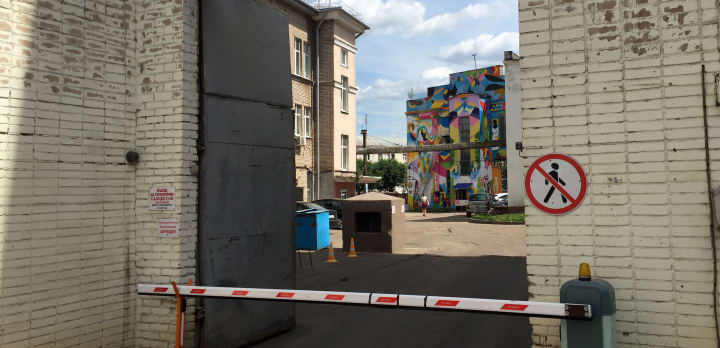
Coverage of Minsk, as limited as it is, tends to focus on Belarus’ relative isolation on the world stage. After the fall of the Soviet Union, Belarus aligned with Russia, limiting tourism and largely preserving the structures put in place under communism. But as the nation’s relationship with Russia faces heightened tensions, Belarus has turned its face westward, opening its borders for 30-day visa-free travel, expanding its local information technology sector to western European investors, and even playing host to the second annual European Games this past June. As one anonymous dancer shared over the ironically melancholic thump of dark disco track, “Since last year, everything is different now. Everything is new.”
HIDE might be one of the best exemplifications of this newfound Belarusian spirit. Celebrating its first party in March of this year, Minsk’s alternative scene has taken to the club as a destination to both dance and experience the breadth of local culture. On weekends, HIDE hosts electronic music events featuring DJs and other musicians; during the week, the space can take the role of a gallery, with occasional performances by dancers, poets and other creatives.
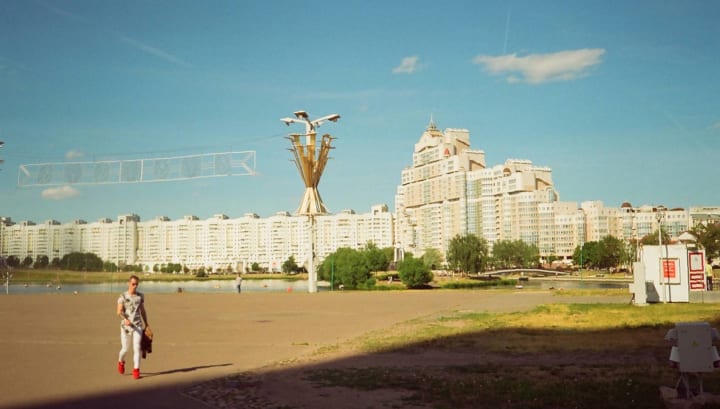
Sergei Mikhalkevich, the owner and primary force behind HIDE, first started throwing parties in Belarus a decade ago. Back then, he says, event hosting was a completely different experience: a mess of permits, location scouting, lighting and sound rentals in a city that was still building its understanding of electronic music
“It was very difficult, because it was necessary to adapt to the conditions of each place,” remembers Mikhalkevich, “and you could not guess which system you would need [for each party].” Navigating these struggles hardened Mikhalkevich’s resolve, making him more determined to cut through the city’s red tape and make Minsk’s parties accessible to everyone. His persistence helped him develop a following, and Mikhalkevich quickly became a trusted voice in the small but growing world of Belarusian techno.
Mikhalkevich’s efforts came at just the right time. Other collectives appeared, throwing parties of their own in the city’s various bars and disused warehouses. Bassota, now one of the most prominent bass music collectives in Minsk, was among this founding group of promoters, and it hosted its first events five years ago. Those days were humble: a simple turntable-and-PA setup on the street outside a bar. Today, the crew’s parties bring in crowds numbering over a thousand.
Egor Kipah, a founding member of Bassota, is something of an oral historian for Minsk’s electronic music scene. Born in the city, Kipah spent his early twenties teaching English in China, only returning to Belarus occasionally to renew his visa. China offered him an expansive world of underground music, dance and culture; Belarus, in contrast, had “nothing.”
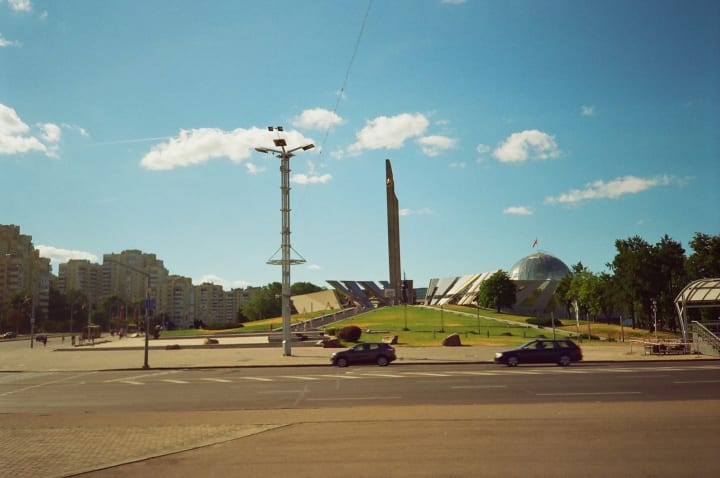
“I came back, and there was no place to listen to bass music, no place to party. I thought, we can make something. And we actually did,” Kipah says with a smile.
Parties like those hosted by Mikhalkevich and Bassota eventually convened around Kastryčnickaja Street, a former industrial district left in ruin following the collapse of the Soviet Union. The abundance of abandoned factories meant opportunity: big spaces, room for expansion and—crucially—no neighbors.
In Kipah’s telling, Kastryčnickaja Street’s cultural explosion traces back to Huligan, a bar that, when it opened in 2013, was the first of its kind on the street. The bar became a much-needed home base for the alternative crowd, hosting concerts and street parties in conjunction with groups like Bassota.
Soon, spaces began popping up in the area’s available nooks and crannies. OK16, a cultural center sponsored by the Belarusian Belgazprombank, and one of the first spaces to draw international attention to Minsk’s music scene, made its home in the roomy MZOR plant near the street’s end. Lo-Fi Social Club, a venue, workspace, and tattoo shop, has an even more peculiar location; getting there means traveling to the opposite end of the Kastryčnickaja Street, cutting behind the nearby Belarus State University dorms, venturing past a gated fence and carrying on until the graffiti-laden building is in sight. For outsiders, complications like these may dissuade. For locals, it’s what makes their scene their own.
Seeing this growth, Mikhalkevich knew that settling his parties in a single location could bring success to the burgeoning Belarusian techno scene. When the opportunity came to buy a former factory space on the now-booming street, he jumped.
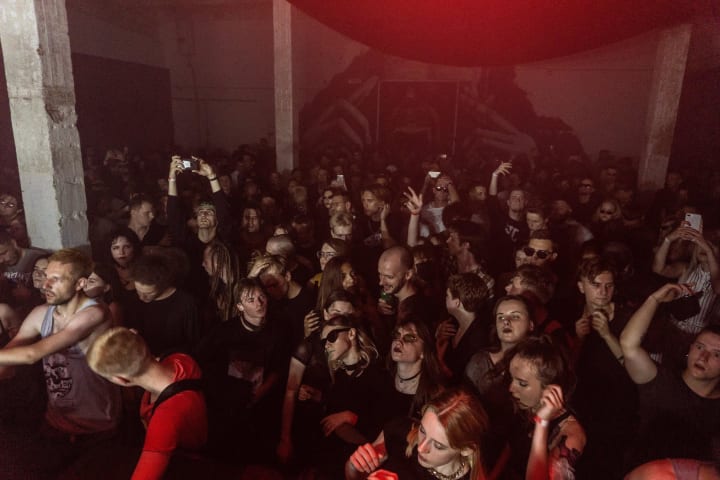
“There were no techno clubs in Belarus, and when I found a great location, I decided to open [HIDE],” he says. Doing this allowed him to avoid the pitfalls that plagued earlier parties. “In your own club, you know how your sound sounds, where there are sound traps, how you can emphasize the dignity of a DJ depending on their music style,” he explains.
Even with Mikhalkevich’s industry experience, settling into the club was a learning process.
“It was a warehouse, a non-residential premises in an old factory… [and] we rented a room completely without communications. We did not have a deferred payment on rent, and all the time while the repair was going on we had to pay…It was very expensive in terms of finances.” After all of this trouble, HIDE’s opening night was still “disastrous,” admits Mikhalkevich. “Because of the vast space, the sound resonated terribly…The dust of construction hadn’t settled down yet, so it just hung in the air.”
Soon, however, the parties found their groove, and just a few months later, HIDE is a staple destination in the Minsk electronic scene.
“These are the people who have been going to my parties for many years. And now they have a place where they are always welcome, where they can listen to their favorite music and dance. Around us is only office space, so we have no problems with neighbors. We had no fights with the government, either,” Mikhalkevich notes. “At the beginning of the work, there were checks, but we had a complete order with all the documents—we were ready for all the checks.”
The topic of official oversight is one broached carefully. Belarus holds a controversial position internationally, with criticism levied against the government’s authoritarian style and lack of independent media. Concerning the latter, coverage of Minsk’s electronic music scene within the country is sparse, and local promoters rely instead on their own means of distributing information to bring in crowds.

Amassing audiences through social networks like Telegram, VK and Instagram, organizers boost events to followers around Belarus and beyond. Bassota’s Telegram group, which claims almost three thousand members, sends near-daily updates ranging from party promotions to new releases and DJ mixes. HIDE keeps similarly active on Instagram, pushing events through both stories and posts before sharing videos the morning after.
“We can send a message out like, ‘Hey, we are having a party tonight,’ and we will fill that party,” explains Kipah. “At the same time, we talk to other similar promoters, like, oh, we are having a party then, you have your party later, so no one throws parties at the same time.”
This solidarity is a big part of the Minsk scene, Kipah claims. To that end, Bassota’s Telegram serves as a promotional tool for not only the collective, but the Minsk party scene as a whole. A quick look through their feed offers listings ranging from the group’s own shows at OK16 to other events at Lo-Fi Social Club, Huligan Bar, HIDE and other spaces.
“We are creating a musical community,” notes Aslamin, a producer and organizing member of Bassota, “one that promotes interesting, impactful parties — not just places to drink or get off.”
Their mission is taking hold. By midnight on Friday, Kastryčnickaja Street is a flurry of activity, with teens and twenty-somethings socializing and playing music in the lines that extend from nearly every venue. Among these venues is HIDE where, despite the cold, a sizeable crowd has gathered, waiting in the courtyard with IDs in hand for the bouncer to wave them in.
This courtyard has proven one of HIDE’s biggest strengths. Its size means modularity, and the club can shift and restructure to fit the needs of each party. For Bassota’s 50-hour five year anniversary event earlier this year, the HIDE courtyard hosted garage and house DJs alongside displays from local fashion brands. Tonight, even as the temperature dips to near-freezing, a portion of the outdoor area is enclosed and given turf flooring, providing jacketed dancers with another place to step.
Inside, the main floor is spacious, decorated in the same muraled style that composes the majority of Kastryčnickaja Street. A disco ball sits on the DJ booth while pennants hang from above, casting shadows and shimmering reflections as the space floods with light and fog.
As Instagram and Telegram brought the dancers to the floor, they have a marked presence in the club, at least at the beginning of the evening. The young crowd takes photos and videos, reporting back to jealous friends or others on the way. Some come and go, making stops at the many other parties on Kastryčnickaja Street that evening. But as the night continues, the crowd stabilizes, and phones become less and less present. Dancers, clad in black and glitter, have their heads up, moving to the evolving beat. The DJ drops a classic Italo disco track, and the crowd erupts in cheers.
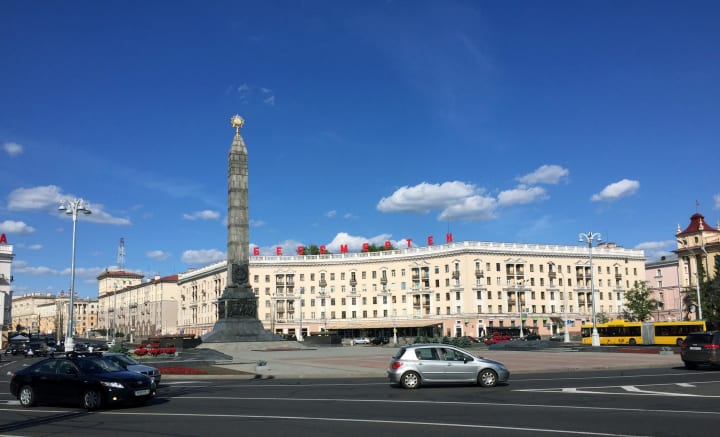
“People coming from abroad have love for our club,” Mikhalkevich says, “but the return from the Belarusian community is not always felt.” On the outdoor floor, a few dancers are hesitant, standing to the side while the DJ transitions into an acid house track. Minsk has gone from having no underground party venues to a whole city’s worth in just under two years, and as a result, some stops and starts are to be expected. Still, the crowd sticks around, and its numbers remain strong until daybreak.
Daylight marks the end of the party, but the night is not over. Some line up at a nearby 24-hour coffee and sandwich shop to refuel; others sit with their heads in their hands, fighting sleep as they wait for the bus to bring them back to the city. Music still plays, but it has become faint, a needed respite before the street’s inevitable reignition later that afternoon.
“The Belarus scene has made a huge step forward in recent years,” Aslamin remarks. When he is not organizing with Bassota, Aslamin works with a program teaching young girls music production software, just one of several educational initiatives that now exist in the city. “Our scene is really unique in its energy and atmosphere, and we now have a number of interesting DJs, artists, producers and people who are truly passionate about music trying to make Minsk even better.”
Asked about his goals for HIDE, Mikhalkevich takes a second. “I would really like people in Belarus to begin to understand the atmosphere of techno, to understand the music and catch that state where you and the music become one.” He admits, “That is more a dream, not a goal.”
Special thanks to Olga Ovchinnikova for her work on this piece as a translator.
Published December 19, 2019. Words by Braden Bjella, photos by Braden Bjella & HIDE.

